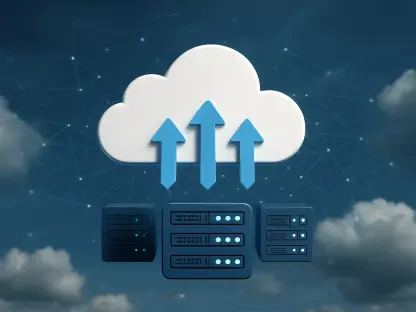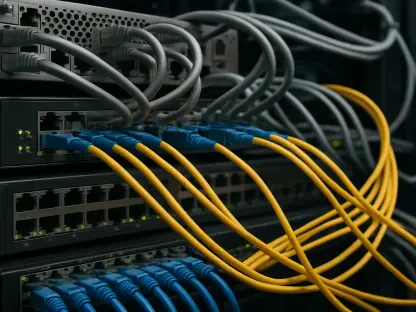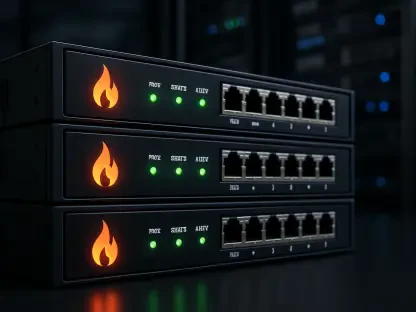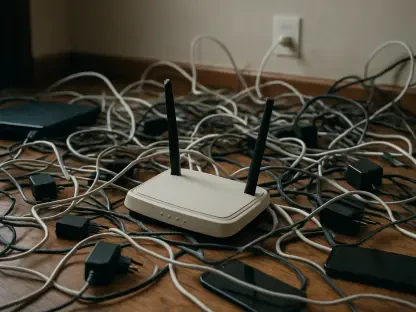As the telecommunications industry illuminates new paths with advanced 5G technologies, challenges arise that shadow its inherent promise. Central to this evolution is 5G network slicing, an innovation that offers tailored network services but faces inherent control limitations due to broad application categorizations in mobile operating systems. This market analysis explores the advances that tokenization brings to 5G slicing, defining clearer paths for enhanced control and security that align with industry demands.
A New Era in Telecommunication Management
At the heart of telecommunication advancement lies a revolutionary shift that challenges conventional approaches to network management. A crucial issue faced by network administrators today is the constraints enforced by operating systems like Android and iOS, which group applications in static categories such as gaming or messaging. This method negates the premise of customized application-specific connectivity that 5G slicing ambitiously aims to provide. Tokenization emerges as a vital solution, potentially transforming the way network slices are managed and secured.
Insights into Industry Transformations and Evolution
Historically, mobile networks offered blanket services to all users, a concept that seems antiquated in the current era of digital customization. The introduction of 5G technology was meant to shift this narrative, providing unprecedented potential for unique, application-driven experiences. Yet, this transformation faces hindrances due to the universal way mobile OSs categorize applications. This industry’s historical lens reveals the necessity for a precise, token-based approach to circumvent barriers and chart an innovative course for future network management.
App Tokens and Operator Tokens: A Strategic Bridge
Tokenization provides a strategic solution by deploying App Tokens and Operator Tokens to navigate and overcome existing network challenges. App Tokens authenticate individual applications, enabling network operators to implement precise policies that optimize data distribution. On the other hand, Operator Tokens verify user identities, safeguarding privacy without relinquishing control over personal data. These technologies promise remarkable benefits for network slicing, allowing users to fine-tune service access for different applications while bolstering security measures for authorized users.
Comparative Insights into Integration Challenges
Tokenization requires seamless integration with broader network strategies to prevent potential inefficiencies. While token-centric solutions permit meticulous application management, they must mesh with existing network protocols for cohesive operations. Observing industry trends suggests adopting hybrid methods that combine tokenization with traditional practices, ensuring comprehensive and consistent performance across networks. However, challenges persist in balancing these integrations, inviting discussions on achieving synergies among network participants.
Global Dimensions: Diverse Approaches to Tokenization
The global landscape of tokenization introduces complexities when considering varying regulatory environments and market demands. No single solution can encapsulate the diversity inherent in geographical differences. Exploring regional approaches showcases how innovation evolves differently across markets, highlighting unique methodologies that contribute to broader industry adoption. Regional adaptations, aligned with a global framework, play crucial roles in enabling widespread acceptance and overcoming the misconceptions surrounding token initiatives.
Navigating Future Trends and Innovations
Looking toward future developments, several trends position themselves to shape the trajectory of tokenization in telecommunications. Technological advances continue to redefine possible frameworks, while economic conditions underscore the importance of cost-efficient strategies. As regulatory bodies modernize to accommodate these changes, AI-driven analytics merged with token management are expected to transform network operations, providing a future glimpse where personalization and seamless communication become industry standards.
Key Strategic Insights for Industry Participants
Focusing on the insights gathered, stakeholders must engage in strategic token adoption to leverage the full potential of 5G slicing. Tackling this challenge involves implementing token management frameworks, fostering collaborations among parties, and staying aligned with evolving industry standards. Empowering consumers with knowledge of token-based systems ensures informed decisions regarding network offerings. Adopting these strategies guarantees that operators and users fully capitalize on the advanced capacities that 5G technology delivers.
Reflecting on the Strategic Transition
The intricate role of tokenization in enhancing the control and security of 5G slicing stands as a milestone in telecommunication innovation, illustrating a pivotal shift from traditional models to advanced, application-driven strategies. Lessons drawn from this strategic overhaul underscore the importance of fostering collaborations and innovation within the network sphere. As the tech industry navigates beyond past constraints and embraces tokenization, it lays the foundation for continued progress, ensuring communication technologies meet the dynamic needs of a connected future.









